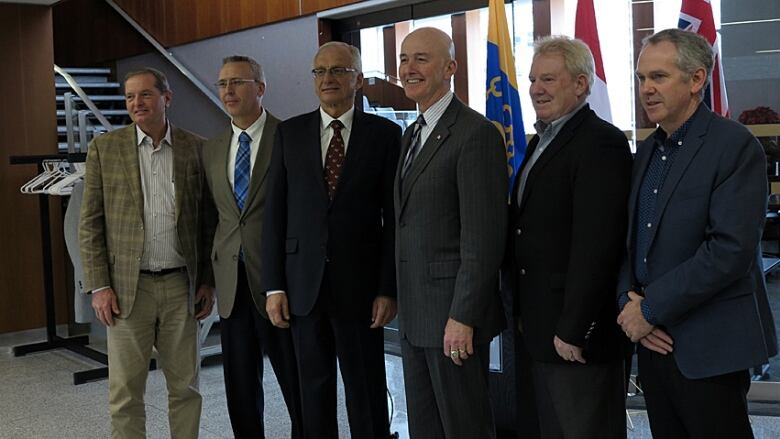Hamilton gets $23M from Ottawa for sewage treatment
The project will have a 'legacy influence' on the environment in Hamilton, director says

Hamilton has been promised $23 million in federal money for a new facility to treat sewage sludge, but the city has no idea right now what that facility will be or what technology it will use todeal with the sludge.
Ottawa has promised the city up to $22.91 million to build a new waste treatment facility at the citys Woodward Avenue treatment plant.
The facility would deal with biosolids the roughly 100 tons of sewage the city creates every day. Currently, a treated version of the sludgeis spread on local farm fields.
Weve got plans in place now, and projects that are going to have a real legacy influence on the environment around Hamilton.- Dan McKinnon, director of Hamilton water
It isn't a sexy subject to talk about, said Dan McKinnon, the citys director of water. But this is really important.
When combined with planned upgrades to the Woodward facility, weve got plans in place now, and projects that are going to have a real legacy influence on the environment around Hamilton.
David Sweet, MP for Ancaster-Dundas-Flamborough-Westdale, announced the money at city hall on Wednesday. It comes from the P3 Canada Fund for public-private partnerships.
The city still doesnt know what form the new facility will take. It could be for incineration, pyrolysis or another technology, McKinnon said. The city issued a preliminary call for interest last year and got 17 responses. It will put out a request for proposals next year.
Whatever operator the city chooses, the P3 money will pay for 25 per cent of the cost of building the facility. The city will pay for the other 75 per cent, plus the cost of operating the facility for the next 30 years. The maximum budget is around $111 million over 30 years, McKinnon said.
Liberty Energy, a California-based company, was interested in building an incinerator in Hamilton for the citys biomass.
The company hasnt officially said that its not interested anymore, McKinnon said. But that could be the case.
Libertys proposal was predicated on having the incinerator on its own property, he said. And the city didnt produce enough biomass to make the incinerator project economically viable.
I dont know if theyll have an interest in this or not, he said.
The federal money, said Mayor Bob Bratina, means its a $23 million load off local taxpayers.
Had we gone ahead on our own project, there would have been $23 million of money on our backs that somehow wed have to finance, he said.
When a technology is chosen, Bratinasaid, incineration won't necessarily win the day.
"There seem to be four or five (operators) in the game now."












_(720p).jpg)


 OFFICIAL HD MUSIC VIDEO.jpg)
.jpg)



























































































